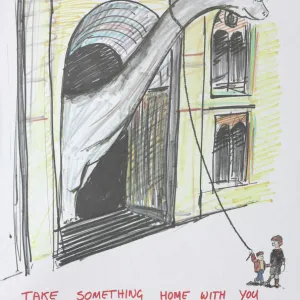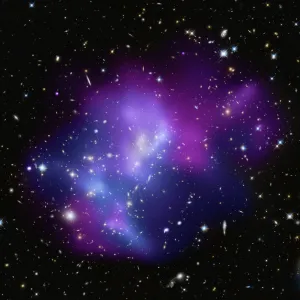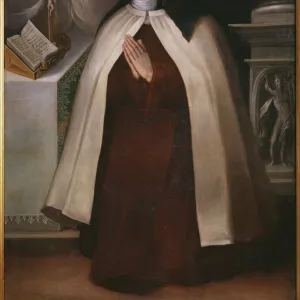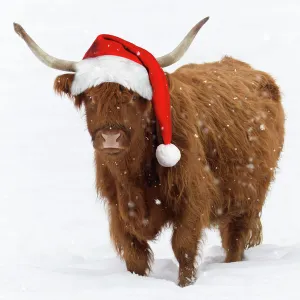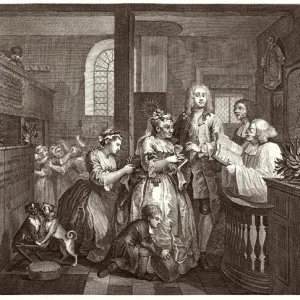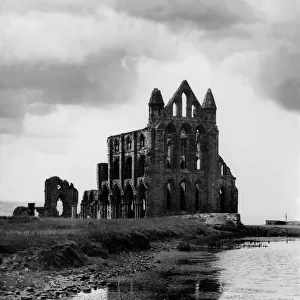Home > Animals > Insects > Spiders > Six Spider
The Seven Sisters, also known as the Pleiades
![]()

Wall Art and Photo Gifts from Stocktrek
The Seven Sisters, also known as the Pleiades
The Seven Sisters, also known as the Pleiades, seem to float on a bed of feathers in a new infrared image from the Spitzer Space Telescope. Clouds of dust sweep around the stars, swaddling them in a cushiony veil.
The Pleiades, located more than 400 light-years away in the Taurus constellation, are the subject of many legends and writings. Greek mythology holds that the flock of stars was transformed into celestial doves by Zeus to save them from a pursuant Orion. The 19th-century poet Alfred Lord Tennyson described them as glittering like a swarm of fireflies tangled in a silver braid.
The star cluster was born when dinosaurs still roamed the Earth, about one hundred million years ago. It is significantly younger than our 5-billion-year-old sun. The brightest members of the cluster, also the highest-mass stars, are known in Greek mythology as two parents, Atlas and Pleione, and their seven daughters, Alcyone, Electra, Maia, Merope, Taygeta, Celaeno and Asterope. There are thousands of additional lower-mass members, including many stars like our sun. Some scientists believe that our sun grew up in a crowded region like the Pleiades, before migrating to its present, more isolated home.
The new infrared image from Spitzer highlights the tangled silver braid mentioned in the poem by Tennyson. This spider-web like network of filaments, colored yellow, green and red in this view, is made up of dust associated with the cloud through which the cluster is traveling. The densest portion of the cloud appears in yellow and red, and the more diffuse outskirts appear in green hues. One of the parent stars, Atlas, can be seen at the bottom, while six of the sisters are visible at top.
The Spitzer data also reveals never-before-seen brown dwarfs, or failed stars, and disks of planetary debris (not pictured)
Stocktrek Images specializes in Astronomy, Dinosaurs, Medical, Military Forces, Ocean Life, & Sci-Fi
Media ID 13061911
© Stocktrek Images
Atlas Brown Celestial Cluster Constellation Dust Dwarf Stars Filaments Green Infrared Orange Pleiades Seven Sisters Square Image Star Clusters Taurus Yellow Alcyone Electra Maia Merope
FEATURES IN THESE COLLECTIONS
> Animals
> Birds
> Columbiformes
> Doves
> Related Images
> Animals
> Extinct
> Dinosaurs
> Animals
> Insects
> Beetle
> Fireflies
> Animals
> Insects
> Spiders
> Six Spider
> Animals
> Insects
> Spiders
> Web Spider
> Animals
> Mammals
> Bovidae
> Taurus
> Arts
> Artists
> D
> Alfred
> Related Images
> Arts
> Artists
> P
> those present
> Popular Themes
> Poets
EDITORS COMMENTS
In this photo print, the ethereal beauty of The Seven Sisters, also known as the Pleiades, is brought to life. Taken by the Spitzer Space Telescope in infrared light, these celestial stars appear to float delicately on a bed of feathers. Enveloped in a cushiony veil of swirling dust clouds, they exude an otherworldly charm. Located over 400 light-years away in the Taurus constellation, the Pleiades have long been steeped in mythology and lore. According to Greek legends, Zeus transformed this flock of stars into celestial doves to protect them from Orion's relentless pursuit. Poet Alfred Lord Tennyson once described them as a shimmering swarm of fireflies entwined within a silver braid. Born around one hundred million years ago when dinosaurs roamed our planet, this star cluster is significantly younger than our own sun. Its brightest members are named after Atlas and Pleione - two parents - along with their seven daughters: Alcyone, Electra, Maia, Merope, Taygeta, Celaeno and Asterope. Thousands more stars populate this cluster including ones similar to our sun. The new infrared image captured by Spitzer reveals intricate details never seen before. A spider-web like network of filaments colored yellow, green and red represents dust associated with the cloud through which the cluster travels. The denser core appears vividly in yellow and red hues while its outskirts display softer green tones. Additionally hidden within this cosmic tapestry are brown dwarfs - failed stars - as well as planetary debris disks that remain unseen here but add further intrigue to this extraordinary scene captured by Stocktrek Images' lens.
MADE IN THE USA
Safe Shipping with 30 Day Money Back Guarantee
FREE PERSONALISATION*
We are proud to offer a range of customisation features including Personalised Captions, Color Filters and Picture Zoom Tools
SECURE PAYMENTS
We happily accept a wide range of payment options so you can pay for the things you need in the way that is most convenient for you
* Options may vary by product and licensing agreement. Zoomed Pictures can be adjusted in the Cart.


